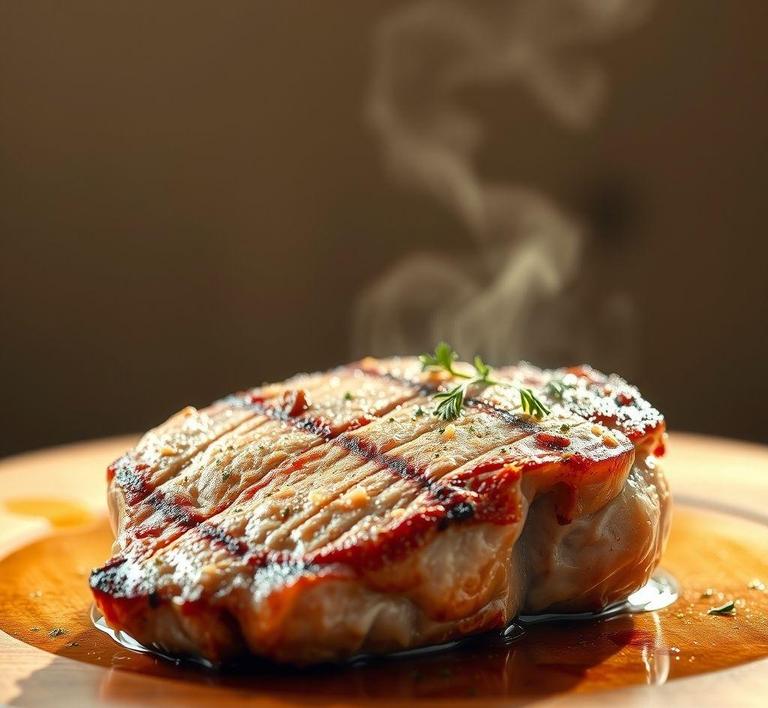Refreezing pork meat can be a bit tricky, but with the right knowledge, it’s totally doable. While it’s always best to avoid refreezing meat to maintain its quality and taste, sometimes life happens, and you might find yourself needing to do so. The key is to handle it properly to prevent any issues like texture changes or food safety risks. In this guide, we’ll walk you through the do’s and don’ts of refreezing pork meat, how to safely thaw and refreeze it, and tips for keeping it fresh and delicious, so you can avoid wasting food without compromising on flavor.
Can You Refreeze Pork Meat?

The question of whether pork meat can be refrozen is one that many home cooks and chefs have pondered, especially when handling leftovers or trying to preserve the freshness of pork. In short, yes, pork meat can be refrozen, but there are important considerations to ensure both safety and quality are maintained. The process of freezing pork (or any meat) can preserve it for an extended period, but when it comes to refreezing, there are critical factors that come into play-namely, the state of the meat when it was first frozen and how it has been thawed before the second freeze.
The key principle here is that meat should only be refrozen if it has been thawed properly. Thawing pork should always be done in the refrigerator or under cold water-methods that maintain a safe temperature. If pork has been left at room temperature for an extended period (more than 2 hours), it is no longer safe to refreeze, as bacteria can multiply rapidly, compromising the meat’s safety.
Moreover, the condition of the pork before it was initially frozen matters. Fresh pork that hasn’t been exposed to prolonged periods of warmth or moisture should be fine to refreeze, as long as it hasn’t been cooked yet. If the pork was cooked before being frozen, you can also refreeze it, though there are additional considerations regarding texture and flavor.
How To Refreeze Pork Meat?
Refreezing pork meat follows a straightforward process, but ensuring proper technique will protect its safety and quality. Here are the steps to effectively and safely refreeze pork meat:
1. Thaw The Pork Properly
To start, it’s important to thaw the pork safely before refreezing. The safest method is to thaw the meat in the refrigerator, where it will remain at a safe, consistent temperature of 40°F (4°C). This method prevents bacteria from growing and ensures the meat thaws evenly. Depending on the size of the pork cuts, this can take anywhere from several hours to a full day.
If you’re in a rush, you can use the cold water method: place the pork in a tightly sealed plastic bag and submerge it in cold water. Change the water every 30 minutes to keep it cold. This method allows the pork to thaw quickly but should still be done under safe conditions.
2. Inspect The Pork Before Refreezing
Once the pork has thawed, you should inspect its appearance, smell, and texture. If the pork has been improperly thawed (such as left out at room temperature for hours), it should be discarded. Also, if the pork has developed an off smell or slimy texture, it’s better to err on the side of caution and not refreeze it.
3. Portion The Pork
If you plan to use only a portion of the thawed pork, it’s a good idea to divide it into smaller, meal-sized portions. This will make it easier to thaw only what you need in the future, reducing the need for multiple cycles of thawing and refreezing.
4. Package The Pork For Refreezing
Proper packaging is essential when refreezing pork to preserve its quality. Use airtight, freezer-safe bags or containers to prevent freezer burn. If you’re using a freezer bag, squeeze out as much air as possible before sealing. A vacuum sealer can be particularly helpful for keeping the pork sealed tightly, thereby minimizing exposure to air and reducing the risk of freezer burn.
If you’re using a container, ensure it is tightly sealed to avoid any moisture or air from getting in. For extra protection, consider wrapping the pork in plastic wrap or aluminum foil before placing it in the freezer bag or container.
5. Label And Date
Make sure to label each package with the date it was refrozen. Pork can be safely stored in the freezer for up to six months, but keeping track of how long it has been in the freezer is vital to ensure it is consumed before the quality deteriorates.
6. Freeze Quickly
Once the pork is properly packaged, place it in the coldest part of your freezer, preferably in a single layer to ensure the meat freezes quickly. A quick freeze helps maintain the texture of the meat, while slow freezing can lead to the formation of large ice crystals, which could damage the meat fibers and negatively affect its texture.
Quality Impact
Refreezing pork meat can significantly impact its quality. While it is safe to refreeze pork under the right conditions, the process can alter the meat’s texture, flavor, and moisture content. Here are some of the key changes you may notice:
1. Texture Changes
The most noticeable impact of refreezing pork is often on its texture. When meat is frozen, the water inside its cells forms ice crystals. During the thawing process, these ice crystals can rupture the cell walls, leading to a loss of moisture. When the meat is refrozen, the water content will be further reduced, which can result in a drier and tougher texture. This effect is more pronounced in cuts of pork that are more delicate, such as pork chops or tenderloin.
Ground pork and cuts with more fat, like pork belly, may hold up better to refreezing because the fat helps retain moisture and flavor. However, if you are freezing a roast or a thick chop, be prepared for a potential decrease in tenderness upon reheating.
2. Flavor Loss
Freezing and refreezing pork can cause some loss of flavor. While freezing doesn’t inherently change the flavor of pork, it can cause changes that impact its overall taste. The loss of moisture can lead to a less juicy and flavorful piece of meat. Additionally, prolonged exposure to air in the freezer may cause freezer burn, which can result in a dried-out or slightly off taste. Using vacuum-sealing methods or tightly wrapping the pork in airtight packaging can help minimize flavor loss.
3. Freezer Burn
Freezer burn occurs when meat is exposed to air during the freezing process, leading to dehydration and oxidation. The result is an unpleasant, dry, and often tasteless portion of pork. While freezer burn doesn’t make the meat unsafe to eat, it can severely affect the flavor and texture. This is why it is crucial to package the pork tightly before refreezing and avoid leaving it exposed to air in the freezer.
While it is safe to refreeze pork meat, it is essential to do so with proper care and attention to detail. The key to successful refreezing lies in the meat’s initial handling: it must be thawed properly, not left at room temperature for long periods, and packaged securely to prevent freezer burn. Refreezing can alter the pork’s texture and flavor, making it less desirable for some recipes. However, if you handle the pork correctly and take precautions, it can still be enjoyed after being refrozen, especially in dishes where the texture is less critical. By understanding the process and the potential quality impacts, you can make informed decisions about when and how to refreeze pork to minimize waste and enjoy it later.
Is It Safe To Refreeze Pork Meat?
Refreezing pork meat is a topic that often brings about mixed opinions, but when done properly, it can be safe. However, several important factors must be considered before putting your pork back in the freezer after it has already been thawed.
The USDA (United States Department of Agriculture) confirms that refreezing pork is safe, as long as it was thawed in the refrigerator and hasn’t been left at room temperature for too long. If pork meat has been thawed in the fridge (and kept at a consistent temperature of 40°F or below), you can refreeze it without compromising its safety. This is because freezing slows bacterial growth, so if the meat has stayed cold, it hasn’t had the opportunity to grow harmful pathogens.
That being said, the quality of the meat might degrade with refreezing. Each time pork meat is frozen and thawed, the ice crystals formed in the meat cells can rupture the fibers, leading to a drier, less flavorful texture. The second freeze will also break down the texture further, so while it may still be safe to eat, it may not be as appetizing.
So, to sum up: yes, it’s generally safe to refreeze pork meat, but only if it was thawed safely in the fridge, and only once. Repeated cycles of freezing and thawing can increase the risk of bacterial contamination and decrease the meat’s quality.
Signs That Pork Meat Should Not Be Refrozen
While pork can be safely refrozen in certain conditions, there are crucial signs that indicate the meat should not be refrozen under any circumstances. These signs point to potential health risks or compromised quality, and ignoring them could result in unsafe eating.
- Unpleasant odor – The first and most obvious indicator that pork meat shouldn’t be refrozen is a foul or sour smell. If the meat gives off a strong, unpleasant odor after thawing, it’s a clear sign that bacteria or spoilage have occurred. Even if the pork was kept at the right temperature, prolonged storage can lead to an off smell, which indicates it has gone bad.
- Slimy or sticky texture – After thawing, if the pork feels slimy or sticky to the touch, it’s another red flag. A slimy texture usually means that bacteria have started to break down the meat’s surface. This is a common result of improper thawing, such as leaving the pork at room temperature too long.
- Color changes – Fresh pork should be a pale pink or light red. If the color changes significantly to a dull brown or grayish hue after thawing, it could indicate that the pork has been exposed to air for too long, resulting in oxidation and bacterial growth. Although some discoloration is normal after freezing and thawing, a drastic change in color is often a bad sign.
- Excessive freezer burn – While freezer burn doesn’t make meat unsafe to eat, it does affect the flavor and texture. If the pork shows significant signs of freezer burn – meaning it has patches of dry, discolored spots caused by air exposure – it’s likely best not to refreeze it. Although the pork won’t make you sick, the texture and taste will be unpleasant.
- Time spent in the ‘danger zone’ – If pork meat has been thawed outside the refrigerator for more than two hours, it enters the ‘danger zone’ (between 40°F and 140°F), where bacteria multiply quickly. Refreezing pork that has spent too much time in this zone is risky because bacteria may have multiplied to dangerous levels, even if you don’t notice any visible signs.
Common Refreezing Mistakes
Refreezing pork can be a practical solution for reducing food waste, but there are several common mistakes that people often make during this process. These mistakes not only jeopardize food safety but also the quality of the meat.
- Thawing pork at room temperature – The most common mistake is thawing pork on the counter or in hot water, which brings the meat into the “danger zone” for extended periods. Once meat is thawed this way, harmful bacteria can multiply rapidly, increasing the chances of foodborne illness. Always thaw pork in the refrigerator, or if you’re in a rush, use the microwave or cold-water method (submerging the meat in cold water, changing the water every 30 minutes).
- Refreezing pork multiple times – Refreezing pork multiple times is a mistake that many people make in an attempt to prolong its shelf life. Each time meat is frozen and thawed, it loses moisture, flavor, and texture. Not to mention, repeated freezing increases the risk of bacterial contamination, even if you follow safe thawing practices.
- Refreezing pork in improper containers – Storing pork meat in improper packaging can lead to freezer burn, a condition that negatively impacts both the flavor and texture. When refreezing pork, always use airtight, freezer-safe bags or containers. This prevents air exposure and maintains the quality of the meat. Vacuum sealing is an excellent option if you have access to a vacuum sealer.
- Not labeling refrozen meat – A seemingly minor mistake, but not labeling the refrozen pork with the date and the number of times it has been frozen can lead to confusion and potential food waste. Over time, the quality of the meat will degrade, and you might end up eating something that’s not safe or pleasant.
- Not cooking before refreezing – If you’ve cooked the pork already, you should avoid refreezing it unless absolutely necessary. Reheating cooked pork and then freezing it can result in further texture degradation and lead to unsafe handling practices.
Tips And Tricks
If you plan to refreeze pork, there are several tips and tricks to keep in mind that will ensure both safety and quality:
- Thaw pork in the refrigerator – This is the most important tip. Thawing pork meat in the refrigerator ensures that it remains at a safe temperature throughout the thawing process. It may take a bit longer, but it’s worth the extra time to prevent bacteria growth.
- Use vacuum sealing – If you have a vacuum sealer, use it to package your pork for refreezing. Vacuum sealing eliminates excess air, which helps maintain the quality of the meat and prevents freezer burn.
- Cook before refreezing – If you’ve already cooked the pork, it’s best to freeze it cooked rather than raw. Cooked pork will freeze better in terms of flavor and texture, and you can then refreeze it without worrying about bacteria growth.
- Portion your meat – When freezing pork, try to portion it into smaller, meal-sized portions. This way, you won’t have to defrost an entire roast or large cut, and you can refreeze smaller amounts without constantly going through the whole piece.
- Monitor time in the freezer – While pork can be safely frozen for several months, keeping track of how long it’s been in the freezer can help you avoid storing it too long. For best quality, consume refrozen pork within 3-4 months.
- Label everything – Clearly label each package with the date it was frozen and any important details, such as whether it was cooked or raw. This can help you keep track of its freshness and minimize confusion later.
Conclusion
Refreezing pork meat can be done safely, but it requires careful attention to detail. As long as the pork has been thawed properly in the refrigerator and hasn’t been exposed to temperatures outside the safe range, it’s usually safe to refreeze – but the quality might suffer. By understanding the signs that pork should not be refrozen, avoiding common mistakes, and following helpful tips, you can ensure both safety and better-tasting results when dealing with refrozen pork.
Remember, while refreezing is possible, it’s always best to limit how many times meat is frozen and thawed to preserve the taste, texture, and nutritional value. If you follow the proper procedures, you can safely enjoy refrozen pork without compromising your health or your meal’s quality.


